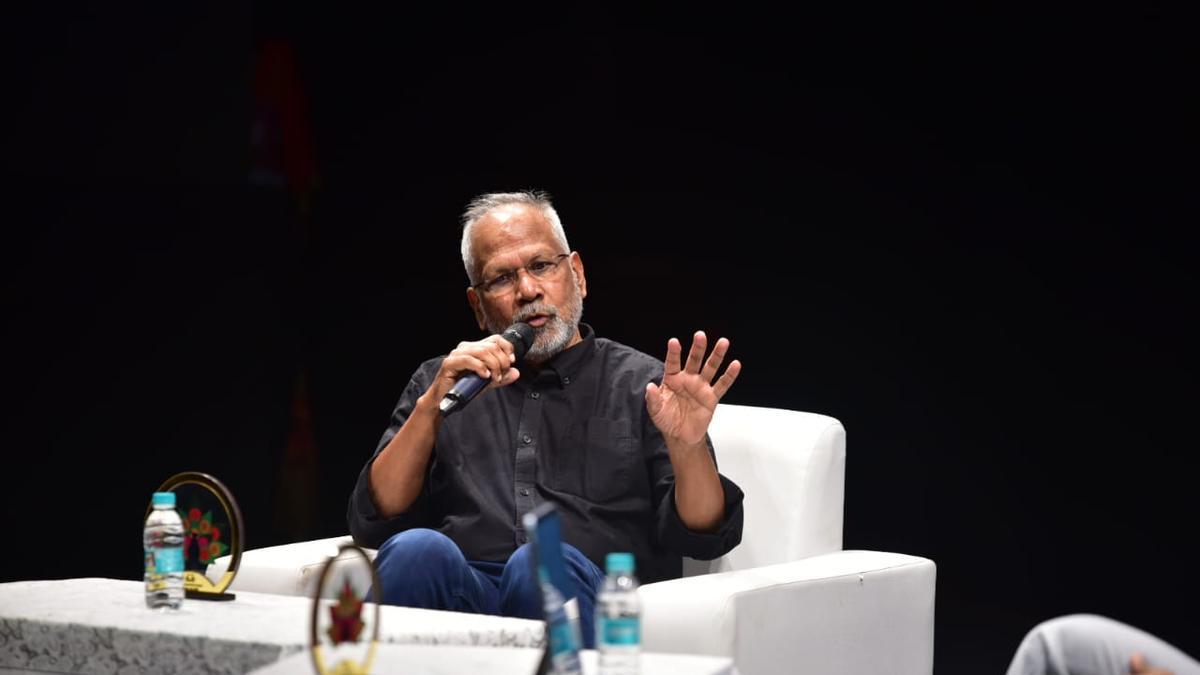
Oppressed classes or groups often get a particular kind of treatment in documentaries, primarily highlighting their hardships. Although these approaches are well-intentioned, they can lead to the filmmaker and the audience overlooking the fact that there is much more to their life than what is seen through the lens of oppression. They too have happy moments and guilty pleasures. Filmmaker Rajesh James’s documentary “Slaves of the Empire,” which shines a light on the lives of laundry workers at the dhobi khana in Fort Kochi, takes another approach, capturing the joyous energy of their daily lives.
The Dutch are believed to have brought the first set of enslaved workers of the Vannar community from Tamil Nadu to work in the laundry houses. Generations later, the community still thrives here, washing and ironing clothes from houses and institutions in the old way in a large shared space. This sense of continuity adds a compelling historical dimension to the documentary.
“Slaves of the Empire,” which has begun its journey at major festivals, focuses on the lives of four of the workers – Rajan, Pratti, Rajashekharan, and Selvaraj – all of them senior citizens, much like the majority of the workers at the dhobi khana. With hardly anyone from the next generation attracted to the job, around 40 families remain dependent on the dhobi khana. The aging workforce adds another layer to the film, encapsulating their enduring contribution to a trade that is fading with time.
One of the fascinating stories highlighted in the film is that of Selvaraj and his admiration for Rajinikanth. We see the man with sheer dedication going to a printing shop with some of his meager savings to get a large-sized print of his favorite star on his birthday, with Selvaraj’s own name added to it. This simple act of fandom tells a deep story about personal joy and dedication, contrasting sharply with the often grim context of their lives.
Rajan’s exchanges with his wife add humor to the narrative, as she sees through his tough exterior. These moments of banter and camaraderie are enriching to watch, humanizing these workers in a way that is both engaging and uplifting. The entire documentary, portrayed in stark black and white, utilizes evocative imagery from their daily lives and customs they hold dear.
. This choice of visual aesthetics lends a timeless quality to the documentary, emphasizing the enduring nature of their way of life.
Rajesh James offers an insightful take on what motivated him to pursue this subject. “The dhobi khana is often viewed through a tourist gaze, but hardly anyone is interested in exploring the history. They are not people to be sympathized with, for they live a happy life. The work did not start as a documentary. I have been interacting with them for quite some time and was interested to explore their daily lives, customs, and leisure activities,” he said. As a faculty member at Sacred Heart College, Thevara, Mr. James brings an academic lens to his films, enriching them with layers of socio-cultural understanding.
His previous documentary, “In Thunder, Lightning and Rain,” which told the stories of three women who endured physical and mental pain, also took a similar approach. By looking beyond their gloomy past and celebrating their strength of character, the documentary underscored the resilience and fortitude of these women. This consistent narrative style in Mr. James’s work emphasizes a more nuanced portrayal of marginalized communities.
“Slaves of the Empire” is a heartfelt testament to the daily lives of the dhobi khana workers. It serves as an essential reminder that while it is crucial to acknowledge the difficulties faced by oppressed groups, it is equally important to celebrate their joys and strengths. The documentary manages to do just that, offering a refreshing perspective that combines humor, dedication, and history in a compelling narrative. This human-centric approach enriches our understanding and appreciation of these workers, making the documentary a must-watch for anyone interested in the complex tapestry of human life.










